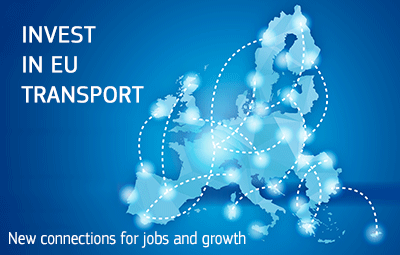The auditors found the EU had made progress in infrastructure development and the opening of the internal transport market, but they warn the EU needs to address six key challenges on the road towards improved mobility within the Union. These include matching objectives and priorities with resources, better planning, infrastructure maintenance, effective enforcement, shifting goods traffic off roads and ensuring EU added value. The review also
provides an overview of and key facts on the transport sector in the EU, investment needs and availability of funds, as well as the state of play for the five main transport modes: road, rail, air, inland waterways and maritime.
 Transport directly affects the everyday lives of all EU citizens and is a strategic sector of the EU economy, with transport services providing around 11 million jobs. Developing the EU’s transport infrastructure requires a considerable financial outlay. The European Commission estimates the total investment needs in this area at about €130 billion per year, excluding the maintenance of transport infrastructure. The transEuropean Transport Network (TEN-T), an integrated multimodal network allowing people and goods to move quickly and easily across the EU, is estimated to cost about €500 billion for the core network between 2021 and 2030; including the comprehensive network and other transport investments increases this amount to about €1.5 trillion.
Transport directly affects the everyday lives of all EU citizens and is a strategic sector of the EU economy, with transport services providing around 11 million jobs. Developing the EU’s transport infrastructure requires a considerable financial outlay. The European Commission estimates the total investment needs in this area at about €130 billion per year, excluding the maintenance of transport infrastructure. The transEuropean Transport Network (TEN-T), an integrated multimodal network allowing people and goods to move quickly and easily across the EU, is estimated to cost about €500 billion for the core network between 2021 and 2030; including the comprehensive network and other transport investments increases this amount to about €1.5 trillion.
The responsibility for developing, financing and building transport infrastructure lies mainly with the Member States. The EU provides support for transport policy through a range of funding instruments, worth a total of about €193 billion for the 2007-2020 period. The auditors warn that the rate of infrastructure development varies across the EU, with the quality and availability of infrastructure still lagging behind in some areas, particularly in eastern regions. Given the limited availability of public funds following the 2008 economic crisis, increased private-sector investment in strategic transport infrastructure is considered essential to address the backlog in investments in transport infrastructure.
“The EU and the Member States have made progress in developing infrastructure, but still need to put yet more efforts in addressing the known and future challenges facing the transport sector,” said Ladislav Balko, the Member of the European Court of Auditors responsible for the review. “The reduced investment in transport infrastructure has held back the modernisation of the EU’s transport network, with average investment levels well below what is needed.”
At the same time, the transport sector accounts for around a quarter of all greenhouse gas emissions and isbecoming one of the main challenges in achieving the EU’s overall decarbonisation goals, given that transport emissions started increasing again after 2014. Measures to accelerate the decarbonisation of transport have already been proposed, note the auditors.
Furthermore, automation, digitalisation and shared mobility are rapidly expanding trends that have the potential to make transport systems more efficient. However, the auditors stress that new technologies and mobility patterns also bring challenges related to the suitability of the legislative framework, privacy protection, safety, liability and data security.
Overall, the EU needs to address the following six challenges facing the transport sector:
1) matching relevant and achievable objectives and priorities with available resources;
2) establishing effective enforcement tools at EU level to ensure Member States’ infrastructure
decisions are more closely aligned with EU priorities, paying particular attention to cross-border
sections;
3) focusing EU funding on priorities with the highest EU added value;
4) improving the planning, implementation and monitoring of EU-funded projects;
5) ensuring that transport infrastructure is adequately maintained and sustainable;
6) enhancing efforts to shift more goods off roads.
Source: ECA